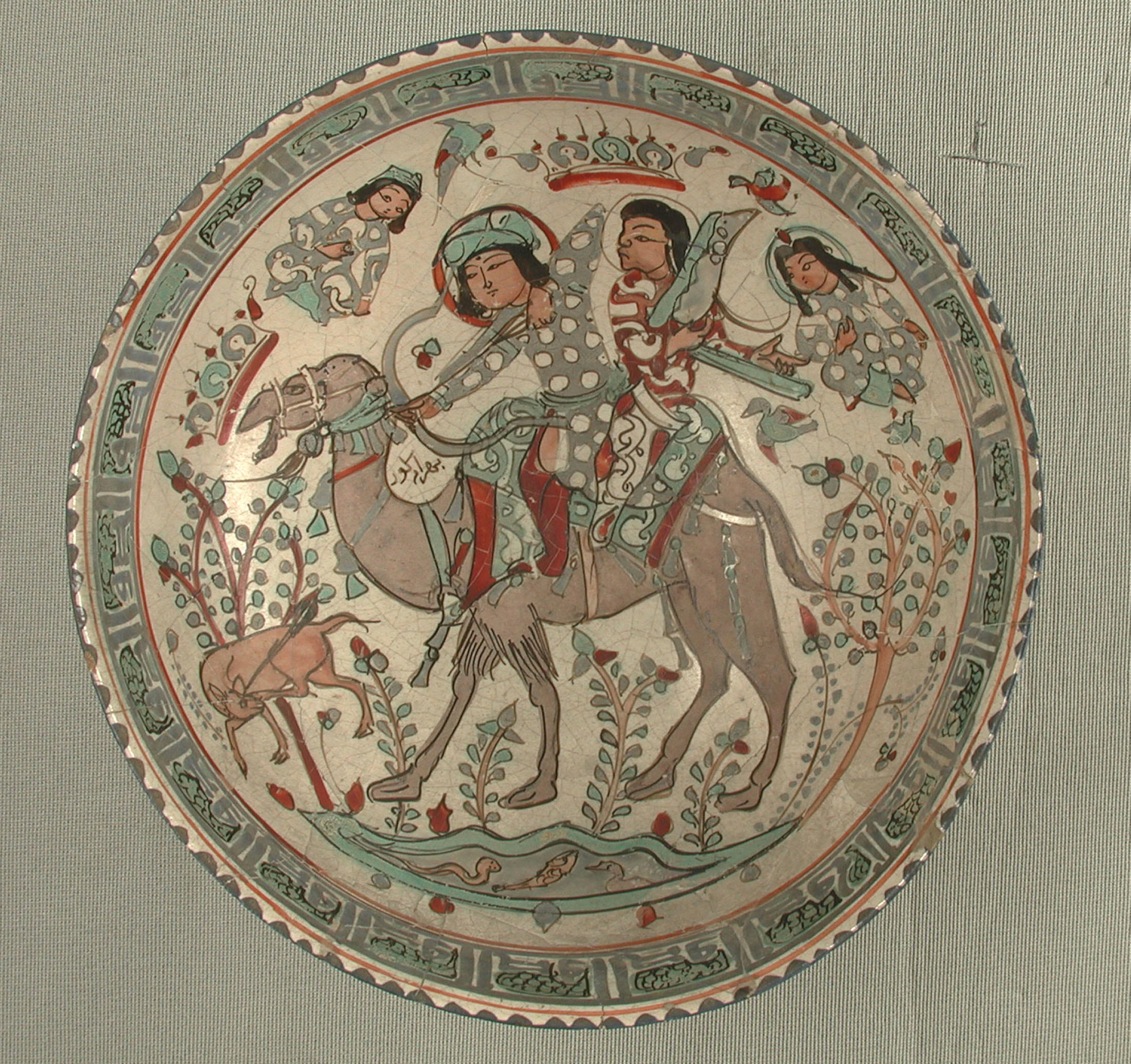
Shop Amazon - Create an Amazon Baby Registry
A Mina'i bowl showing Bahrām Gur and Āzāde the Harpist, Iran, late 12th-early 13th centuries.
Saljuq or Shahdom of Khwarizm.



Bowl
Date: 12th-13th century
Geography: Attributed to Iran
Medium: Stonepaste; overglaze painted, so-called "mina'i" ware
Dimensions: 3 5/8 x 8 3/8in. (9.2 x 21.3cm)
Classification: Ceramics
Provenance: Mortimer L. Schiff, New York (by 1922-d. 1931); his son, John M. Schiff, New York (by 1940-57; sold and gifted to MMA)
Accession Number: 57.36.14
Inscription: -On inside rim, angular script: al-dawla(?) (opulence)
-Interior, behind neck of camel: Bahram Gur
-Exterior: (Persian verses)
Inside part of one word is repeated many times in Kufic script:
الدو
The complete word is:
الدو[لة]
The name بهرام گور written inside the bowl is written in Naskhi script.
On the interior there is a Persian poem in Naskhi script.
On the exterior there is a Persian poem in Naskhi script as:
گیرم که ز جان [خـ]ـسته شرمت ناید [یا] زین دل در [تو] بسته شرمت ناید
برخاسته من با غم تو از سر خود تو با دگری نشسته شرمت ناید
A.Ghouchani
Metropolitan Museum of Art, New York
Referenced as figure 401 in The military technology of classical Islam by D Nicolle
401. Ceramic bowl, 13th century AD, Iranian, Metropolitan Museum, New York.
p40. Whether the heavy European falchion, perhaps first seen in 11th century southern France (Fig. 563), was an independent development or reflected a merging of these two traditions from north and south, remains unclear. There is, however, little doubt that comparable single-edged swords of various lengths continued to be used throughout most of the Muslim world in the 12th and 13th centuries (Figs. 177E-F, 178A-B, 250, 294, 401, 591, 609I and 641).